You can now make many sowings as the weather improves, at last.
So far, it’s been a difficult spring for gardening. Too much wind and many cold nights. Above all a lack of sunshine. In England at least.
Perhaps for you it has been better and I hope so. In fact from 1st to 9th April, we had more sunshine than in all of March. And temperatures are inching upwards, although there is ground frost as I write this on 15th April.
I’ve just published a newsletter to subscribers of my twice monthly letter on Mailchimp, with many details about how to cope with the weather and what to do in the coming few weeks. You can find much more about this in the newsletter’s browser version.
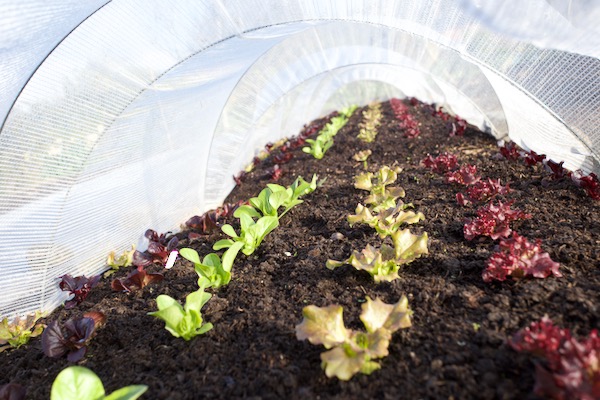

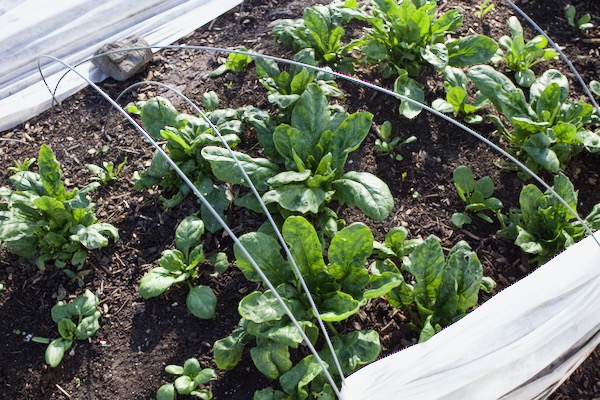
No dig benefits
This spring has really illustrated the beauty of no dig, for ease of access and strength of growth in difficult conditions. The first photo below illustrates this, of my two trial beds.
We have done so much planting already, there is plenty more to do and always the weather is not a hindrance because undisturbed soil does not get muddy or stick to your boots.
The compost heaps have gone up more slowly than usual over winter, but now the availability of materials is accelerating fast. The one which Edward filmed on 9th April is just finished on 14th April, when we spread a little woodchip and soil over the top and then cardboard to keep in warmth. However that can encourage rats so don’t use a cover if you’re worried about them.
Propagation is very important at this stage for cucurbits in particular, and all warmth loving plants.
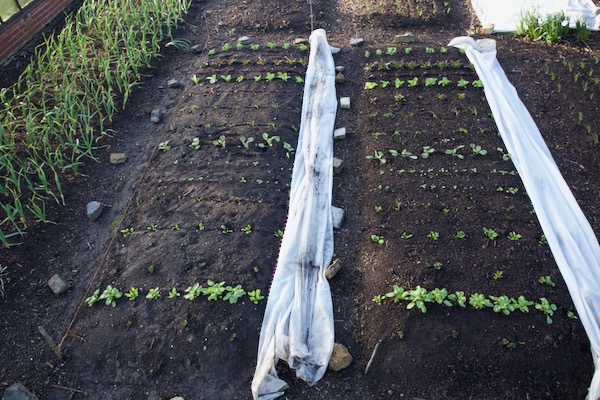
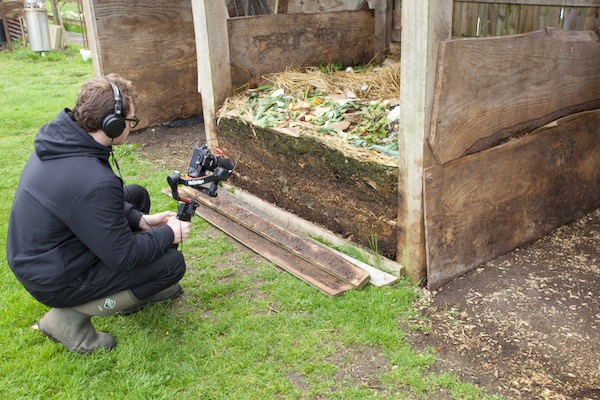

Big moments for propagation
There is so much to do now and this is a big period for sowing seeds of any warmth loving cucurbitaceae. From courgettes and cucumbers, to squash of all kinds. Also loofahs! I sowed them 2nd April with melons and germination is good, from homesaved seed.
Melons are growing strongly with two large cotyledon leaves. Yesterday we potted them into 7 cm pots, 11 days after sowing.
All my books have information on sowing and growing, different according to each title.
We are running some nice offers and the Calendar 2023 price is easing down!
Sowing UNDER COVER mostly, for the second half of April
Courgettes. One per cell in CD module trays works well, then pot on after 10–12 days into 7 cm/3 in pots.
Cucumbers for growing under cover, similar method to courgettes. Be careful not to overwater cucumber seedlings, and it’s the same for melons.
Basil – either multisow or sow in a seed tray to prick out. Or take root cuttings from shop-bought plants – ideas also in this video.Winter squash are also similar and my preferred dates are 20th-25th April.
I am often asked if it’s fine to grow different varieties together and for sure it is, the fruits grow true according to each variety you had sown. The only pollination effect is on the seeds inside each fruit, not the fruit itself.
Sow these too
Sunflowers, dwarf French marigold, zinnias and other tender annual flowers.
Leeks direct, thickly in rows to transplant later, or multisow 4 per cell.
Beetroot – multisow 3 seeds per cell and thin to four seedlings, or sow direct.
Broad beans direct, or one per cell – your final chance for sowing to grow large harvests; because later sowings give a smaller result.
Peas (for shoots and pods) direct, or 1–2 per cell and asap for best harvests with fewer pea moths and less mildew in summer.
True spinach direct, or multisow 2–3 per cell. Sow before 20th April.
Lettuce direct to thin, or in trays to prick out.
Salad onions direct, or multisow 8–10 per cell.
Cabbage, calabrese and cauliflower in trays to prick out.
Radish direct, or multisow 4–5 per cell.
Celery in trays to prick out after about 20 days. It needs light to germinate, so scatter seeds on top of already moistened compost, and then put no more compost on top but lay a glass sheet over the seed tray.
Chard and leaf beet – multisow 2 seeds per cell.
Parsley, coriander and dill direct, or multisow 2–3 per cell.
OUTSIDE (and see above)
Pop in seed potatoes of all kinds. Use a trowel to make a slit in the ground, pull the surface soil and compost towards you, then drop in the seed potato, with its top about 5 cm/2 in below surface level. Use the same method for Jerusalem artichokes.
In June you may need to drop a little more compost over second early and maincrop potato plants, as a kind of earthing up method, to prevent surface potatoes going green. Also you can do similar before any forecast late frost, or simply pull compost from around each potato to cover the leaves, on the evening before it might freeze.
Sow carrots and parsnips direct into drills in your surface compost, 15–20 cm/6–8 in apart for carrot, 39cm/12in for parsnip. Drop a few radish seeds in with carrot or parsnip, to mark the lines and have a few bonus radish in six weeks time. Lay fleece over the newly sown area.
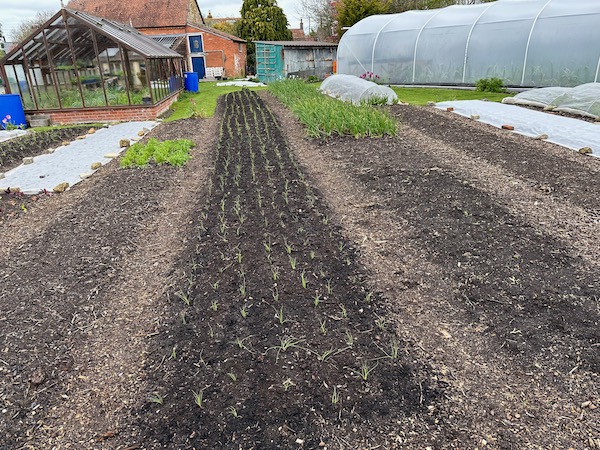
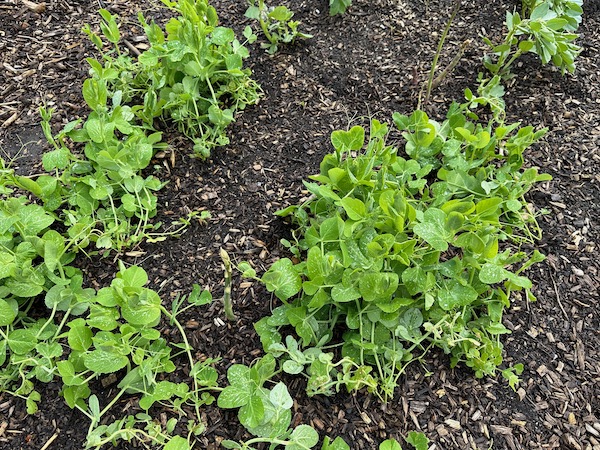
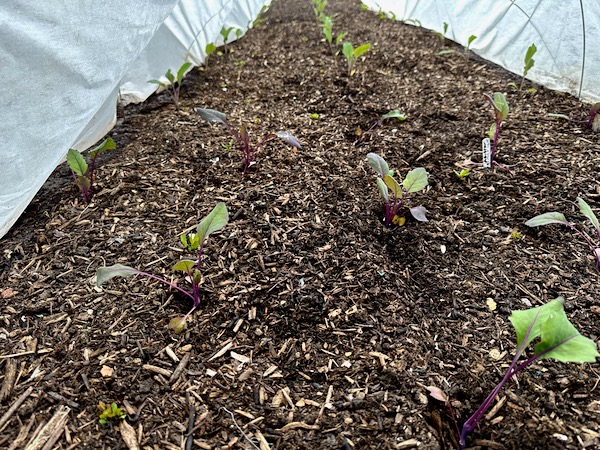
More info in my newsletter









































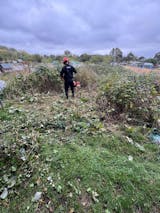
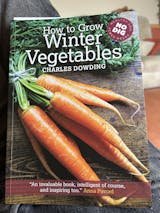
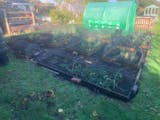
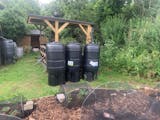
0 comments